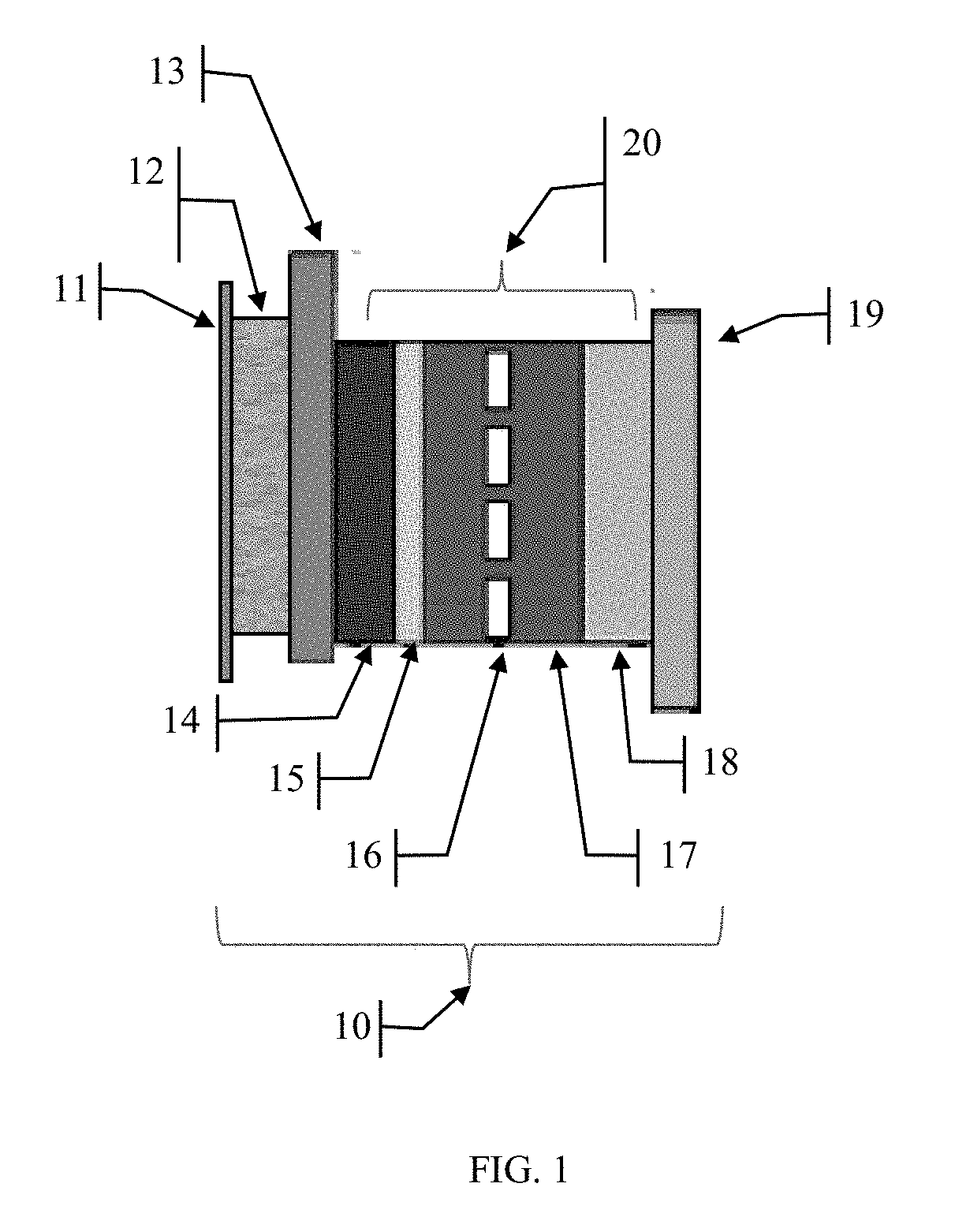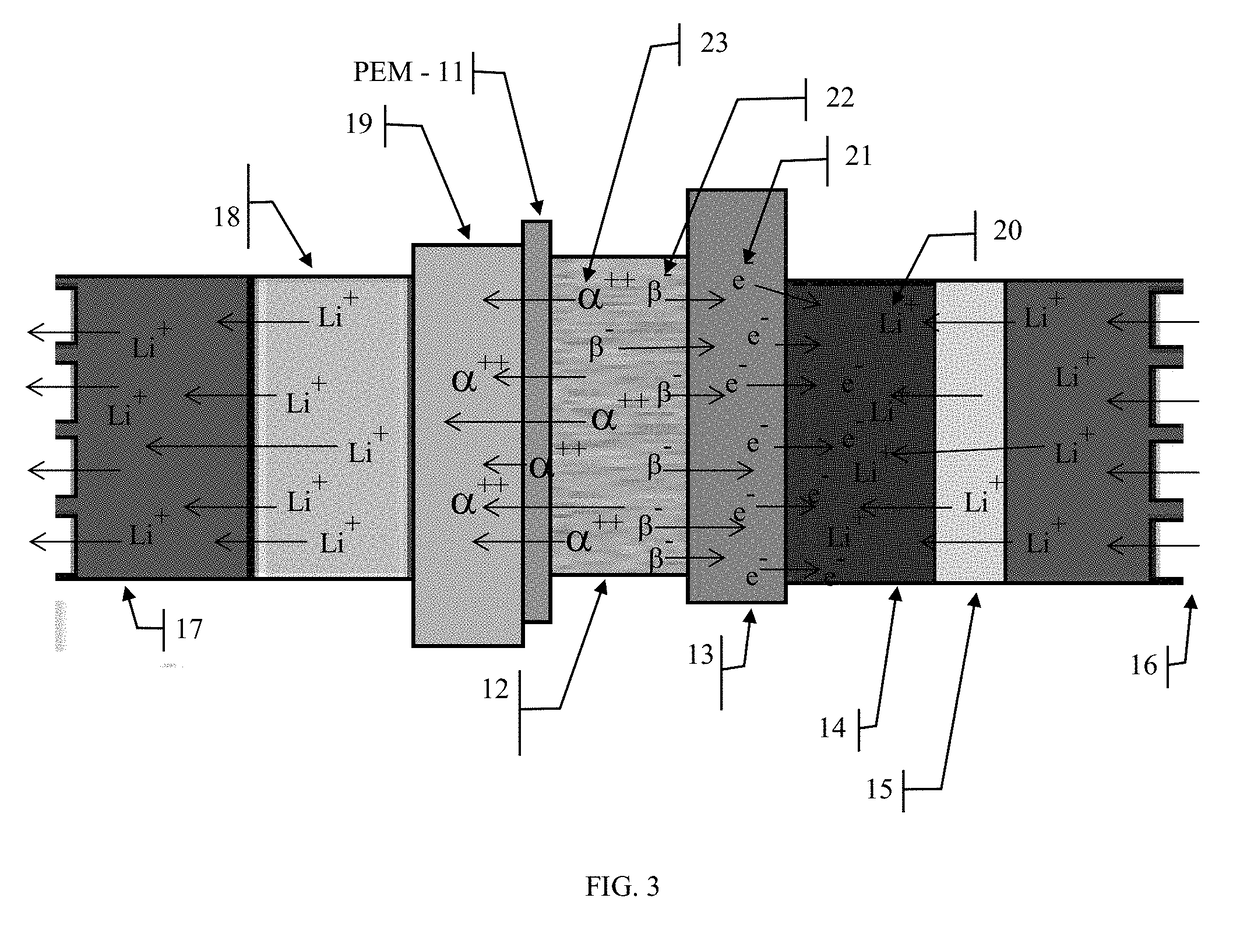Self-recharging direct conversion electrical energy storage device and method
a technology of electrical energy storage and self-recharging, which is applied in the direction of electrochemical generators, cell components, cell component details, etc., can solve the problems of less desirable isotopes that produce gamma rays and high-energy neutrons, and achieve greater energy density and efficiencies, eliminating the health problems of ionizing gamma and or neutron radiation
- Summary
- Abstract
- Description
- Claims
- Application Information
AI Technical Summary
Benefits of technology
Problems solved by technology
Method used
Image
Examples
Embodiment Construction
[0026]For the following discussion, refer to FIG. 1. The device 10, comprises a rechargeable electrochemical cell 20, such as a Lithium Ion cell, which may be comprised of a cathode plate 19 such as aluminum, a Li ion capture material 18 such as LiCoO2 (or LiMnO2, or others), an electrolyte material 17 such as a lithium salt dissolved in organic solvent with a semipermeable membrane 16 separating the anode and cathode sides of the cell, a carbon anode 14 with an plate 13 such as copper, a layer of radio isotope material or a mixture of radio isotope materials 12 which emit alpha and or beta particles, with a bonding (agent not shown) and a proton exchange membrane layer 11 that is comprised of a highly negatively charged material, and a dielectric insulating layer (not shown). These layers can be rolled up to produce a typical cylindrical battery device, referred to in the industry as a “jelly roll,” and shown in FIG. 6, or stacked on top of each other in many layers to produce irre...
PUM
 Login to View More
Login to View More Abstract
Description
Claims
Application Information
 Login to View More
Login to View More - R&D
- Intellectual Property
- Life Sciences
- Materials
- Tech Scout
- Unparalleled Data Quality
- Higher Quality Content
- 60% Fewer Hallucinations
Browse by: Latest US Patents, China's latest patents, Technical Efficacy Thesaurus, Application Domain, Technology Topic, Popular Technical Reports.
© 2025 PatSnap. All rights reserved.Legal|Privacy policy|Modern Slavery Act Transparency Statement|Sitemap|About US| Contact US: help@patsnap.com



